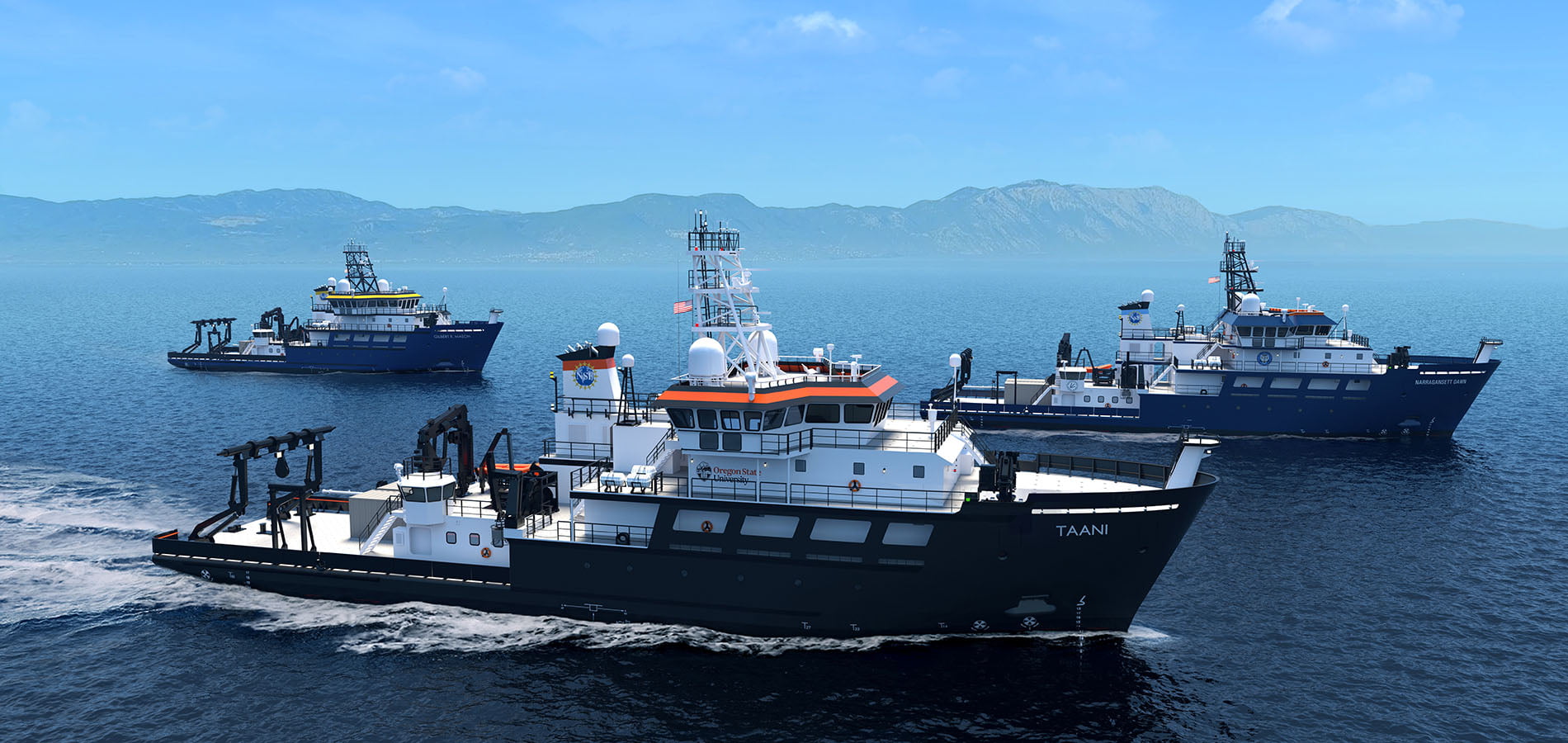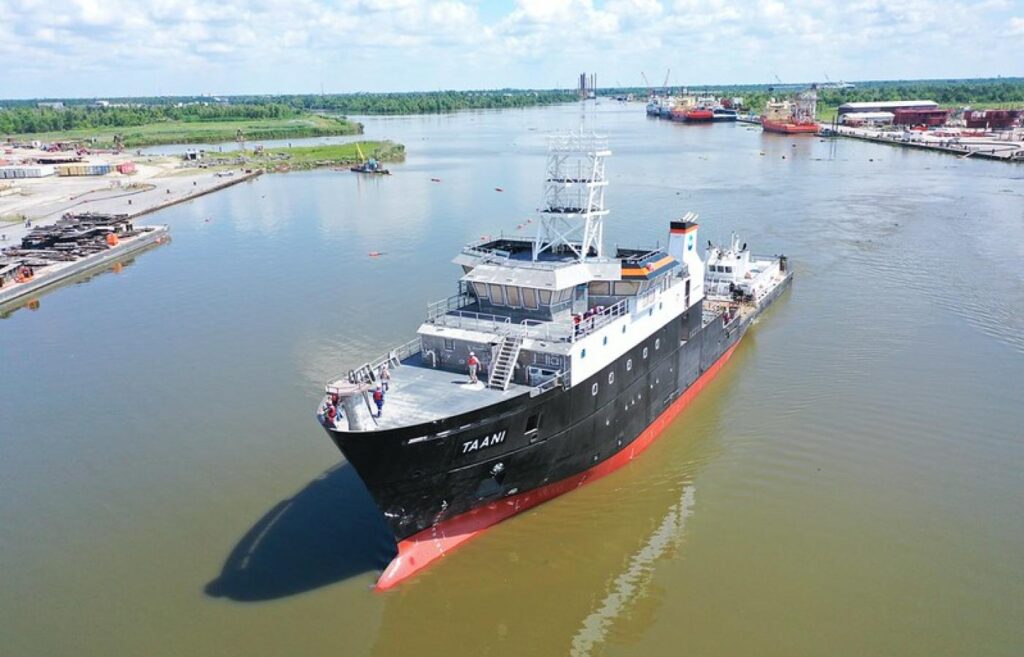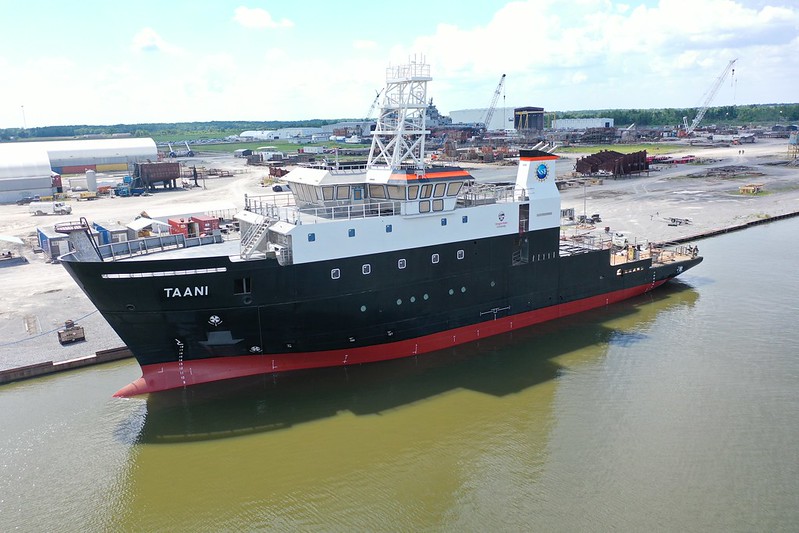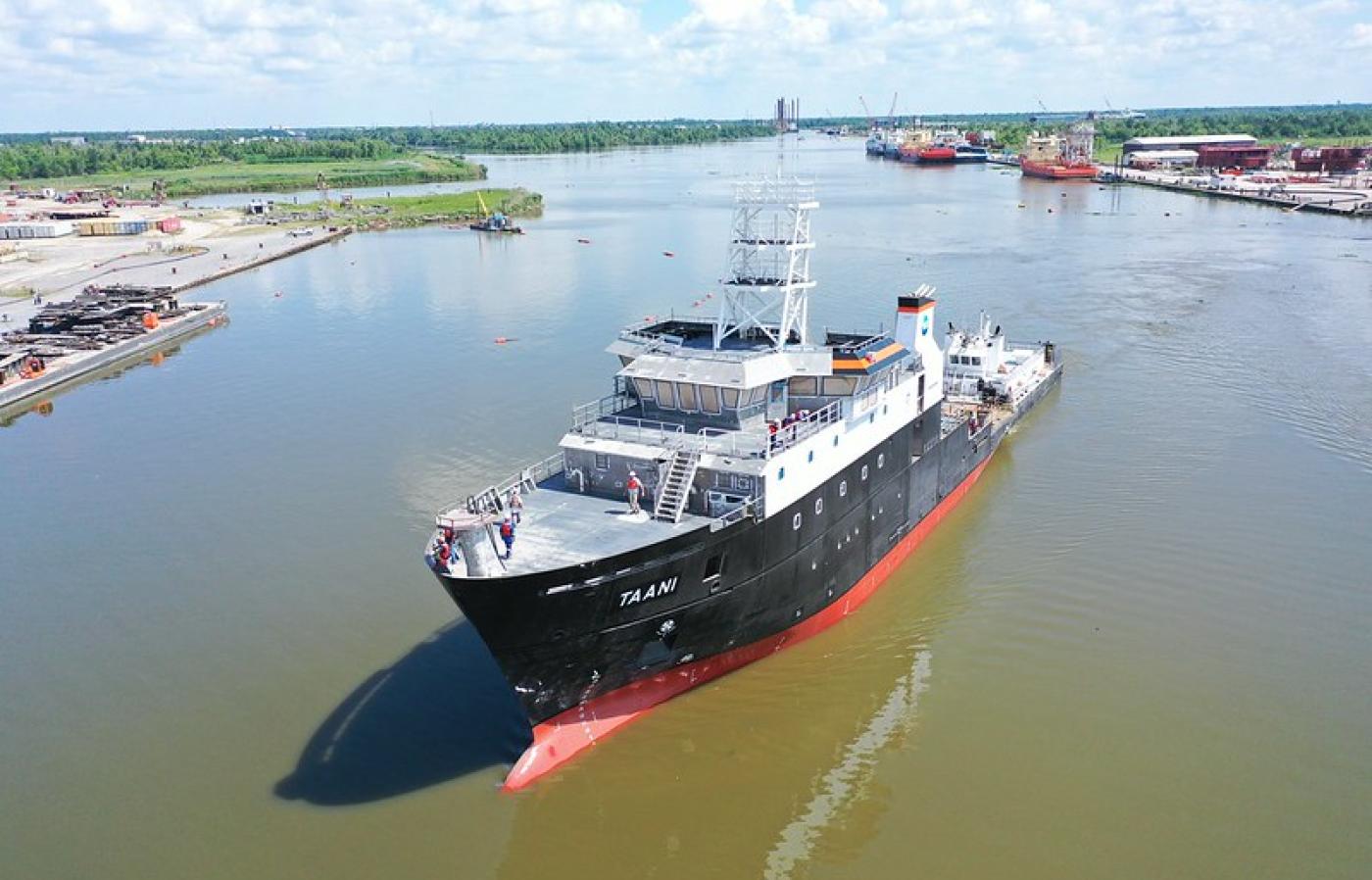Underwater positioning and tracking technology from Sonardyne has been chosen for three new oceanographic research vessels being built under the US’ National Science Foundation (NSF) Regional Class Research Vessel (RCRV) construction programme.
Led by Oregon State University, the state-of-the-art RCRVs are being built for the US’ Academic Research Fleet (ARF), enabling a new era of coastal and regional marine science.
To support the RCRV’s scientific missions, across diverse marine environments, Oregon State University selected Sonardyne’s Ranger 2 Gyro USBL 7000, engineered to meet both the demanding, multidisciplinary research objectives of the ARF and vessel-build requirements.
The first system has recently been delivered to Oregon State University to be fitted to the R/V Taani, to be operated by the university, by vessel builder Bollinger Houma Shipyards.
Systems for the other two vessels, R/V Narragansett Dawn (to be operated by a University of Rhode Island-led consortium) and the R/V Gilbert R. Mason (to be operated by the Gulf-Caribbean Oceanographic Consortium) will be delivered next year.
“The RCRV construction programme represents a significant enhancement to the US Academic Research Fleet,” says James Caison, Design Specialist, at OSU working on the RCRV programme. “These vessels will empower researchers to address critical questions in climate, ecology, and ocean dynamics across the Pacific coast, east coast and Gulf of Mexico.”
“The RCRV construction programme represents a significant enhancement to the US Academic Research Fleet,” says Kim Swords, Technical Sales Manager at Sonardyne. “This order is an endorsement of the precision and reliability delivered by our Ranger 2 USBL systems. It reinforces Sonardyne’s position as a trusted provider of high-performance acoustic positioning technologies for the US marine science and research community.”
Advancing precise tracking for coastal and regional research
Sonardyne’s Ranger 2 will allow US researchers to accurately track and simultaneously communicate with multiple underwater scientific instruments, vehicles or towed platforms, at ranges up to 10,000 m depending on its configuration.
The Ranger 2 Gyro USBL 7000 system was specifically selected for its precise acoustic tracking performance, integrated gyrocompass and proven reliability in complex deployment scenarios.
With Ranger 2 Gyro USBL, scientists and researchers using the RCRVs can be sure of optimal underwater positioning and tracking capabilities, without the need for separate external heading sensors.
For vessels equipped with a dynamic positioning system, Ranger 2 can also provide accurate and repeatable position referencing, in any water, without interrupting target tracking operations.
Learn more about the RCRV programme here.
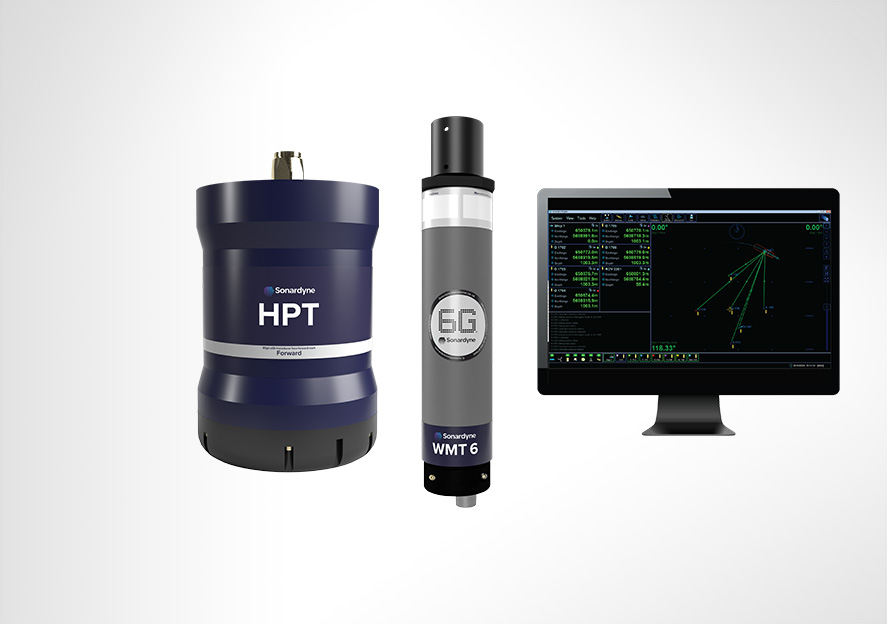
Ranger 2
Our Ranger 2 family of USBL products represent the most capable USBL tracking and communication technology available on the market.
Consisting of software, a top-side transceiver and in-water transponders, Ranger 2 brings together all the features you need, and more.
